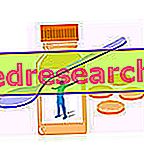
The earwax stopper is the result of glandular hypersecretion or is linked to alterations of the physiological sliding of the earwax from the inside of the ear towards the auricle.
The earwax stopper can cause ringing in the ears (tinnitus), autophony, reduced hearing, ear ache, full ear and dizziness.
What to do
- Soften the wax plug with emollient drops (eg glycerin, mineral oil), 3 times a day for 4-6 days
- Seek immediate medical attention in the event of persistent auricular burning after the instillation of specific emollient drops for removing the earwax cap
- Consult your doctor immediately if, after applying drops to remove the ceruminous plug, the symptoms get worse
- Pay particular attention during the ear washing maneuver: this procedure of removing the earwax cap can in fact break the tympanic membrane or tear the skin of the ear canal
- For ear irrigation it is recommended to use water at body temperature: too cold or hot water can induce vertigo
- Immediately stop washing the ear in case the patient moans nausea, acute pain or dizziness
- Follow a specific antibiotic therapy in case of proven infection: remember, in fact, that even otitis can cause a wax plug
- Solicit natural wax removal by performing regular mandibular movements several times throughout the day
What NOT to do
- Use emollient drops to remove the cerumen plug in the presence of hearing aids
- Use the drops to remove the wax after expiration
- Expose the bottle with emollient drops to light and heat sources
- Use sticks covered with cotton for ear hygiene: the mechanical action of the cotton bud, in fact, pushes the ear wax towards the ear canal which, compacting, creates the cap
- Irrigate the ear in case of tympanic perforation or previous history of otitis
- Take milk and derivatives immediately after the administration of antibiotics such as tetracyclines: dairy products can inactivate the drug
- Administer aspirin to children under the age of 12: similar behavior can cause serious side effects, such as Reye's syndrome, liver dysfunction and brain changes
- Perform the cleaning of the ears with the "candles": the use of wax cones is not very reliable, since the residues of wax can be deposited in the ear canal, creating a plug of wax much more difficult to remove than that of wax
What to eat
- Take yogurt with live lactic ferments or a probiotic in case of prolonged antibiotic therapy to strengthen the immune system
- Take lots of fruit and vegetables, as it is rich in antioxidants (vitamin C and E)
What NOT to Eat
- There is no scientific evidence that relates the food to the worsening of the earwax cap symptoms. It is recommended to follow a healthy, balanced diet, rich in fruit, vegetables and low in fat
Natural Cures and Remedies
To facilitate the removal of the earwax cap, it is possible to apply some emollient drops in the ear. Particularly useful for this purpose are:
- Olive oil
- Peanut oil
- Sweet almond oil
- Vaseline oil
- Oily macerate of propolis
- Ylang ylang oil (emollient, antiseptic properties)
- Macassar oil (emollient, anti-inflammatory, antiparasitic properties)
The oils listed above can be fortified (enriched) with essential oils with disinfectant action, appropriately diluted:
- Essential oil of melaleuca ( Melaleuca alternifolia ) → antiseptic and anti-inflammatory properties
- Essential oil of geranium / citronella ( Cymbopogon nardus ) → disinfectant properties
- Chamomile essential oil ( Matricaria recutita L.) → anti-inflammatory and soothing properties
Pharmacological care
The most widely used drugs for earwax therapy are:
- Local anesthetics: to be used when the earwax cap causes pain in the ears:
- Antipyrin + benzocaine
- Acetic acid + benzocaine + antipyrine + policosanol
- Ceruminolytics: they favor the dissolution of compacted earwax:
- Carbamide peroxide
- Hydrogen peroxide + urea + glycerin
- Glycerin + urea peroxide, citric acid + propylene glycol (eg Debrox)
- Hydrogen peroxide (hydrogen peroxide)
Prevention
- Always perform proper ear cleaning
- Instill a few specific emollient drops into the ear once a week
- Patients predisposed to ear wax should perform ear irrigation weekly
Medical treatments
The correct cleaning of the ears, aimed at removing the earwax, can be performed with:
- Irrigation or washing of the cerumen plug
- Curettage (mechanical removal of the wax plug using a curette)
- Aspiration of earwax



